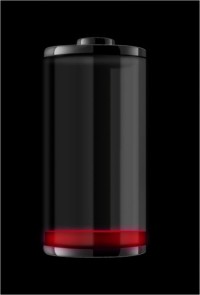In the later part of 2013, researchers at Queen Mary University of London and Imperial College London came up with an interesting technique to boost solar cell efficiency by as much as 45%. The tech was to incorporate Zinc Oxide nanorods coated with an active light-to-electricity converting polymer into the solar cells. They then generated sound waves to trigger vibrations in the nanorods which in turn produced electricity.
The experiment showed significant results with sounds at 75dB (roughly equivalent to day-to-day traffic), and saw greater effects when exposing the cells to high frequency sounds.
More to the point
The key point we are getting at now is the fascinating property of Zinc Oxide nanoparticles to produce greater voltages when certain strain is applied to it – in this case, strain inflicted by vibrations from sound waves.
QMUL has taken this research into a new alley – smartphones. Alongside Nokia, they are looking to solve the great power storage problem of these power hungry gadgets.
Imagine taking this technology and incorporating it into the power electronics part of mobile gadgets. As these gadgets are constantly subject to noise, sounds and all kinds of vibrations, finding the right way to weave these nanorods in could mean constant flow of power coursing through your mobile’s power lines.
The research team has produced a test device implementing the ZnO technology. There has not been much detail and numbers released in regard to power parameters extracted from it, except that it has been tailored to produce 5V levels for mobiles. Phones and tablets only require so much power to charge their single-cell batteries, therefore, the capability to source a sufficient amount of current from this technology should not be concerning.
Facing the Problem
This piece of tech development is certainly refreshing. It has bothered me quite some time about how there is not much attention being put into R&D of power storage. I am sure everyone with a smartphone can relate to this power shortage problem.
I acknowledge it is a very difficult topic, but it is just astounding how there are mounds and mounds of manufacturers of phones coming up with monster upgrades of tech specs, none of which are centered on power storage.
Display screens have gotten so far – Ultra HD screens starting to crop up; processors with incredible overclocking capabilities; all these modules and sensors being jammed into the hardware – don’t get me wrong, it is all truly amazing and impressive. But if you look at it, it seems like the attention and effort of developers has been poured into these aspects, meanwhile, leaving not much improvement on the power performance of it all.
A few weeks back, there was an update on this Kickstarter project called the InkCase+. It is basically an extra screen for your phone, but it uses e-ink technology. Yes, it is a black and white screen that you slap onto your high-resolution colored screen, in order to prolong your battery.
There is just a bit of irony in the whole idea: We have come so far in this technological age to enjoy beautiful screen displays, and somehow find ourselves compromising to revert back to the black-and-white, simply because we are being held back by the limiting factor that is power scarcity.
Going off-topic for a little bit: it just gets you to think if we are going about tech dev the wrong way – advancing too much, too fast in certain aspects, while we lag in certain others. Not unlike how we have marred our environment with all our exhaust fume-generating vehicles, for the sake of our convenience. And now, we are panicking to speedily develop EVs in order to mitigate the damage we are inducing.
Getting back on track with the technology that this article truly intends to share… This Zinc Oxide nanorod technology is aimed to fully and completely solve the shortcomings of the batteries of our phones. The research team working on this tech has even mentioned the possibility of completely foregoing the use of a battery.
If sounds and vibrations will be able to power the phone, yes, it would work anywhere. Of course, anechoic chambers are exceptions…
There are still areas to research on this topic, and I can imagine many many tests and iterations to be done by the dev team. This is fairly new and has only recently been used, so long term performance is yet to be seen. But it does sound incredibly promising. Hopefully in the near future, consumers will be looking for “ZnO” rather than mAH ratings in spec sheets of phones.



Leave a Reply